Metamorphic Rock Definition
Metamorphic rocks are a type of rocks that produce from the modification of preexisting rocks in response to changing environmental conditions, like differences in pressure, temperature, mechanical strain, and the changing of chemical components. The origin rocks may be sedimentary, igneous, or other metamorphic rocks.
Metamorphic rocks are made out from sedimentary rocks or igneous that have modifed their form or recrystallized as a consequence of changes in their physical environment by heat and pressure.
Metamorphism composes changes both in the fabric of the original rock and in mineralogy. In general, these alterations are brought about either by the intrusion of hot magma into cooler surrounding rocks (contact metamorphism) or by large-scale tectonic movements of Earth’s lithospheric plates that change the temperature-pressure conditions of the rocks which is called regional metamorphism.
Water contained in the minerals and pore spaces of rocks played an important role in the chemical reactions that took place during metamorphism. The overall chemical composition of a mass of rocks doesn’t change much during metamorphism apart from the gains or losses of water.
How Metamorphic Rocks Formed
Metamorphic rocks are produced by a process named metamorphism via the transformation of pre-existing rocks.
The protolith, or parent rock, is subjected to heat and pressure which cause chemical, physical and mineralogical changes to the rock. The parent rock – protolith can be either sedimentary, igneous, or even another metamorphic rock.
What is Metamorphism?
Metamorphism is the process by which mineral and structural changes are formed in solid rocks in response to their present physical and chemical conditions, which vary from those under which the rocks were originally formed.
Temperature, pressure, and fluids are the most important factors of metamorphism. Equally important are the changes in the chemical environment that result in two metamorphic processes: (1) mechanical dislocation where the rock is deformed, particularly as a result of differential stress; and (2) chemical recrystallization where the mineral assemblage becomes out of balance due to changes in temperature and pressure and new mineral assemblage forms.
Characteristics of metamorphic rocks
Metamorphic rocks are rocks that have been changed by heat, pressure, and chemical processes, typically while buried deep beneath the Earth’s surface. They are distinct from igneous rocks, which form from cooled magma or lava, and sedimentary rocks, which form from the accumulation of sediment. Some common characteristics of metamorphic rocks include:
-
Textures: Metamorphic rocks can have a wide range of textures, depending on the conditions under which they formed. For example, some metamorphic rocks may be finely grained, while others may have a foliated texture, with layers or bands of different minerals.
-
Minerals: The minerals present in metamorphic rocks can also vary widely. Some common minerals found in metamorphic rocks include quartz, feldspar, mica, and talc. The specific minerals present in a metamorphic rock can provide clues about the conditions under which it formed.
-
Hardness: Metamorphic rocks are typically harder than either igneous or sedimentary rocks, due to the intense heat and pressure that they have been subjected to. This makes them more resistant to erosion and weathering.
-
Foliation: Many metamorphic rocks have a foliated texture, meaning they have a planar or layered structure, resulting from the alignment of certain minerals. The most common types of foliation are slaty, schistose, and gneissic.
-
Grade of metamorphism: The grade of metamorphism refers to the intensity of the heat and pressure that a rock has been subjected to. This can range from low-grade metamorphism, where only minor changes have occurred, to high-grade metamorphism, where the rock has been completely recrystallized.
-
Parent rock: Metamorphic rocks can be formed from any pre-existing rock types, such as igneous, sedimentary, or even other metamorphic rocks. The pre-existing rock is known as the parent rock.
Importance of metamorphic rocks
Metamorphic rocks are important in a variety of ways, both from a scientific and practical perspective. Some of the key ways in which metamorphic rocks are important include:
-
Understanding Earth’s history and tectonics: Metamorphic rocks can provide valuable information about the geologic history of a region, including the temperatures and pressures that have been present at different times. This can help scientists understand the tectonic processes that have shaped the Earth’s surface over time, such as mountain building and plate tectonics.
-
Resources: Metamorphic rocks are the primary source of many valuable resources, including gold, diamonds, and other precious minerals. They also contain important industrial minerals such as talc, graphite, and asbestos. These resources can be extracted and used for a wide range of purposes, from jewelry and electronics to construction materials.
-
Construction: Metamorphic rocks are used extensively in construction. They are used for building roads, and railway tracks, and as a raw material for making cement. They are also used to make flooring tiles, decorative stones, and other architectural features.
-
Scenic beauty: Some metamorphic rocks, like schist and gneiss, have beautiful and unique textures that make them popular in landscaping and decorative stonework.
-
Research and education: Metamorphic rocks are also valuable for scientific research and education. They are used to study the process of metamorphism and to teach students about the Earth’s geologic history and tectonic processes.
-
Cultural and historical: Metamorphic rocks also have cultural and historical significance. They have been used for centuries in sculptures, artifacts, and other cultural items.
Types of Metamorphism
It is suitable to differentiate between several general types of metamorphism in order to simplify the description of the numerous metamorphic phenomena.
We will discuss hydrothermal, dynamic, contact, and regional metamorphism. Each of them will be described in detail.
Hydrothermal Metamorphism

Changes that happen in rocks near the surface where there is extremely hot water activity are classified as hydrothermal metamorphism. Hydrothermal metamorphism exists when there is an excessively hot water activity where the rocks change near the surface.
This form of metamorphism is common to mid-ocean ridges where the crust spreads and develops as a result of the outpouring of hot lava. It is now widely accepted that flowing groundwater, which is often heated by its proximity to igneous materials, produces metamorphism.
The migration of chemical elements, the formation of veins, and other types of mineral concentrations may be extreme due to the large volumes of water circulated.
Dynamic Metamorphism

When directed pressure or stress is the predominant factor of metamorphism, it is called dynamic; other terms are dislocation, kinematic, and mechanical metamorphism. Mineralogical adjustments occurring on a fault plane are a good example of this.
Dynamic metamorphism is also the product of mountain building. Massive extremes of heat and pressure cause the rocks to be bent, broken, smashed, compacted, and sheared.
Contact Metamorphism
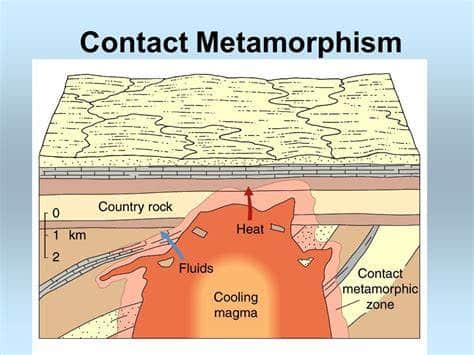
Contact metamorphism is a type of metamorphism that occurs when rocks are altered by the heat from a nearby intrusion of magma. The rock closest to the intrusion is subjected to the highest temperatures, causing a change in its mineral composition and texture. The effects of contact metamorphism are usually limited to a narrow zone around the intrusion, known as the contact aureole.
Contact metamorphism can result in the formation of new minerals, such as garnet, biotite, and amphibole, which are typically formed under high-temperature, high-pressure conditions. It can also cause changes in the grain size and shape of the original minerals, resulting in a more compact and dense rock.
The extent of contact metamorphism is determined by several factors, including the temperature of the intrusion, the size of the intrusion, the time that the intrusion was active, and the type of rock being altered. For example, a large intrusion that was active for a long time will cause more extensive contact metamorphism than a small intrusion that was active for a short time.
Contact metamorphism is important for geologists as it provides information about the history of the intrusion and the surrounding rocks. It can also be used to study the processes that led to the formation of mineral deposits, such as ore deposits, and the geology of mountain ranges. Additionally, the minerals formed during contact metamorphism can be valuable in their own right, as they are often used as gemstones or as a source of metal ores.
A particular type of contact metamorphism, impact metamorphism, is produced by the high impact of a meteorite.
Contact metamorphic rocks of the aureole zone, such as marble, quartzite, and hornfels, frequently lack visible schistosity or foliation.
Regional Metamorphism
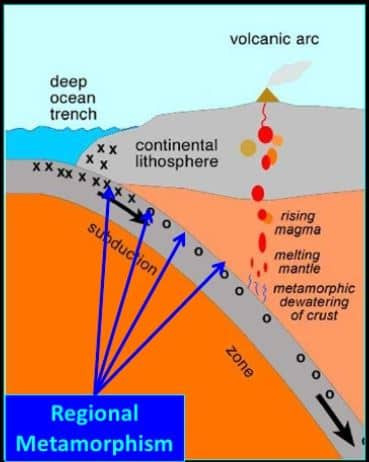
Regional metamorphism is the general type of metamorphism. This occurs across a considerably larger crustal region with high temperatures and pressures.
Most of the regional metamorphism takes place in the deeper layers of the crust, at the margins of colliding and subducting tectonic plates, where the rock is deformed and forced into a new direction. Regional metamorphism is fueled by the internal heat of the Planet.
Regional metamorphism occurs when a segment of strata, originally on the surface, is deeply buried and exposed to squeezing horizontal stress. As this occurs, the rock cracks, buckles, and is slightly or severely folded, depending on the level of ongoing pressure. If the folds are forced further down, the heating increases, and the crystals continue to grow as the rock is converted into a metamorphic rock.
Regional metamorphism generates rocks such as gneiss and schist.
Retrograde Metamorphism

Often the rock type is converted into a high-grade rock at one stage, and later exposed to low temperatures and/or pressure, then changed to another type of rock. If this occurs, it’s known as retrograde metamorphism.
Retro means going backward in progress. Retrograde metamorphism occurs during the uplift and cooling of a rock.
Here is an article explaining the Difference Between Prograde and Retrograde Metamorphism.
Types of Metamorphic Rocks
Metamorphic rocks are classified on the basis of texture and composition, as any rock. There are two primary classes of metamorphic rocks, they are foliated and non-foliated rocks.
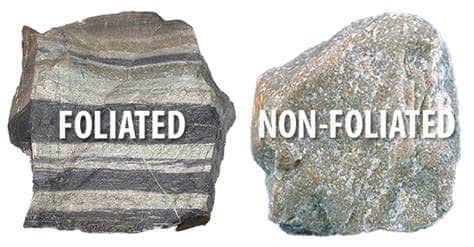
Non-Foliated Metamorphic Rocks
Non-Foliated metamorphic rocks form as metamorphism takes place under constant pressure. In this type of metamorphic rock, layering does not form. The mineral grains grow in all directions and rearrange, but they don’t occur as layers.
This type of rock is produced by an intrusion of magma into country rocks. The minerals that are near to magma will simply recrystallize to form new metamorphic rocks as a heat source is approached. This process is called contact metamorphism.
The best examples of non-foliated metamorphic rocks are marble which was before limestone and quartzite which was before sandstone.
Foliated Metamorphic Rocks
Minerals grains of foliated metamorphic rocks will line up in parallel layers perpendicular to the direction of maximum pressure or stress to form a sheet-like or platy structure. Foliated metamorphic rocks will break up along the cleavage lines that are parallel to the minerals.
Examples of foliated metamorphic rocks are gneiss, slate, phyllite, and schist.
Examples of Metamorphic Rocks
Metabasalt
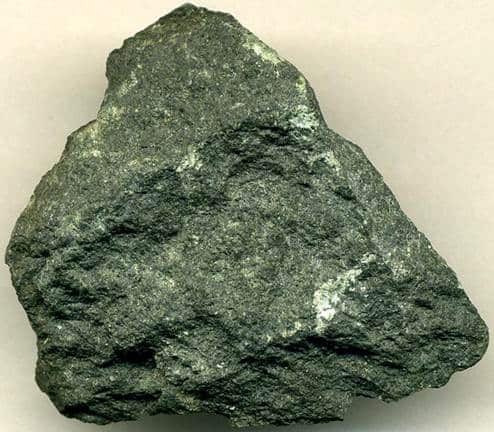
Is a dark green colored rock due to the presence of the mineral chlorite and it’s known also greenstone. It’s very fine grain size and crystals are too small to be identified without a microscope. The origin of metabasalt is basalt.
Amphibolite
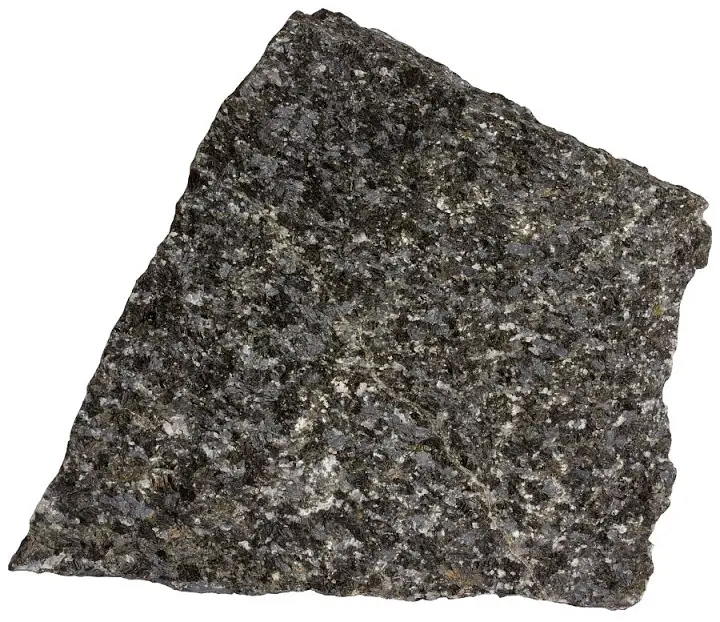
Coarse-grained rock, dark-colored dominated by black or dark green hornblende or tremolite-actinolite. Amphibolites occur deep in the earth’s crust by high-grade metamorphism from mafic igneous rocks.
Granulite

Formed at extreme pressures and temperatures deep in the Earth’s crust. It’s coarse-grained rock and most granulites are from the Precambrian age. By losing water of amphiboles and micas group due to instability in high metamorphism grade, they converted into pyroxenes and garnets.
Blueschist
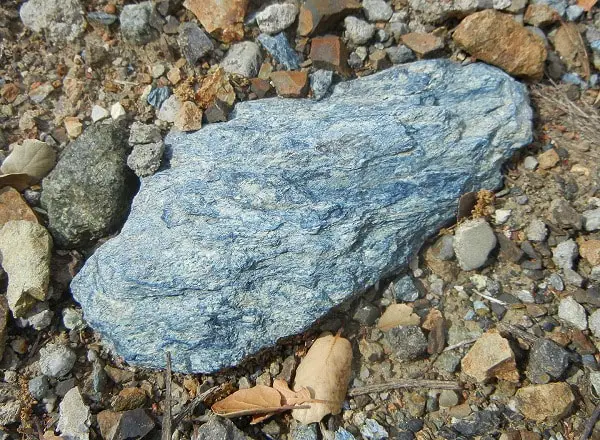
Glaucophane mineral gives its blue color which is so fine-grained that individual grains cannot be seen. Basalt, which is the source rock of blueschist, formed in conditions of comparatively low temperature and high pressure.
Eclogite

This rock develops under very high-pressure conditions. It consists mainly of reddish garnet and greenish omphacite. Eclogites form from basic igneous rocks.
Serpentinite
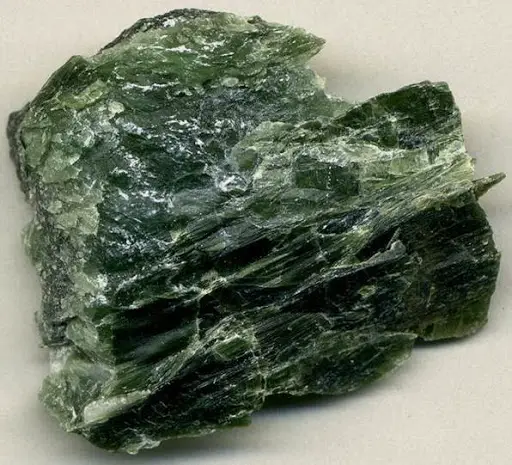
It’s a soft rock and mainly contains yellow and green serpentine minerals. It forms from the metamorphism of olivine and pyroxene ultrabasic igneous rocks (peridotite).
Gneiss
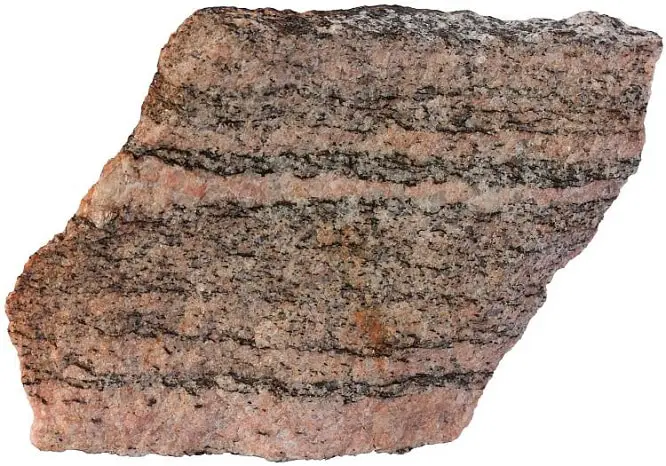
Is a medium to coarse-grained rock with a parallel banded structure that displays distinct foliation. Gneiss is medium to high-grade metamorphic rock. The banding form because of the separation of basic felsic and mafic minerals. The origin of gneiss rock is sedimentary rocks granite.
Migmatite
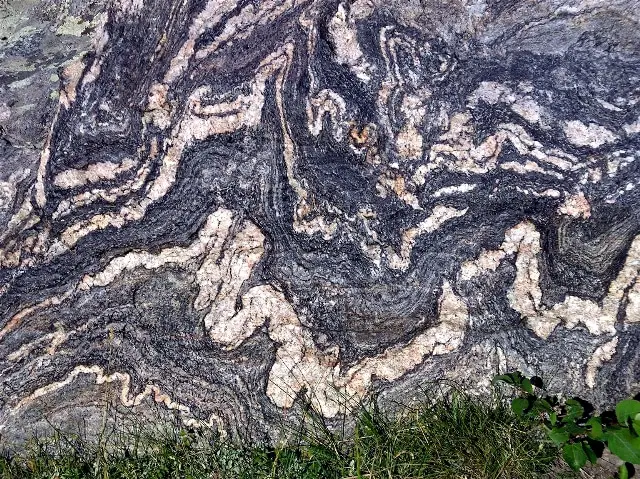
It’s a mix of igneous granite and metamorphic gneiss that forms at the boundary between metamorphic and igneous environments. Migmatite is the highest grade of gneiss.
Quartzite
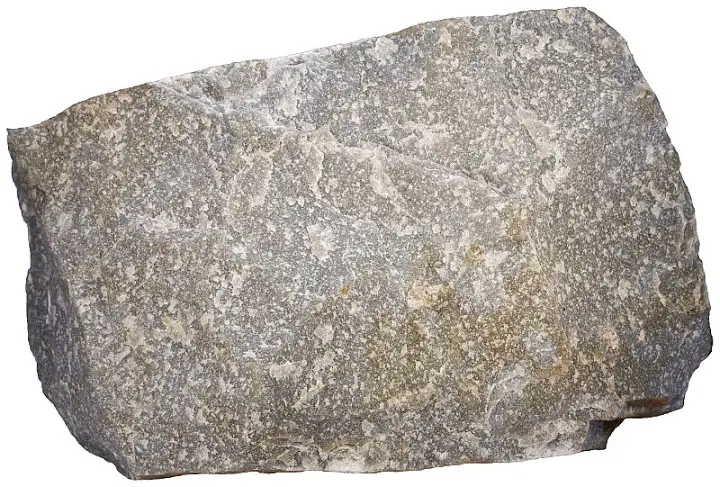
Is of sandstone origin, with sugary-textured rock, non-foliated, harder than sandstone with no pores, and can be white, pink, and cream.
Marble
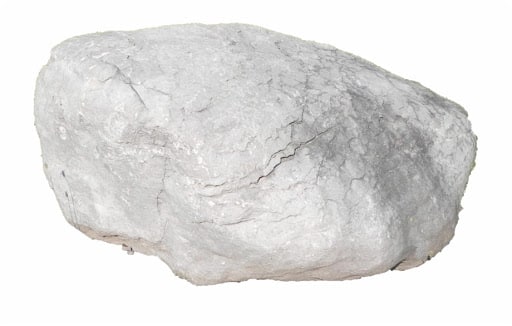
Is a metamorphosed limestone or dolomite, fine to medium-grained rock. Marble formed by contact metamorphism with often associated with skarn and also can form by regional metamorphism. The different colors of marble are due to the amount of impurities being incorporated with the calcite during metamorphism.
Schist
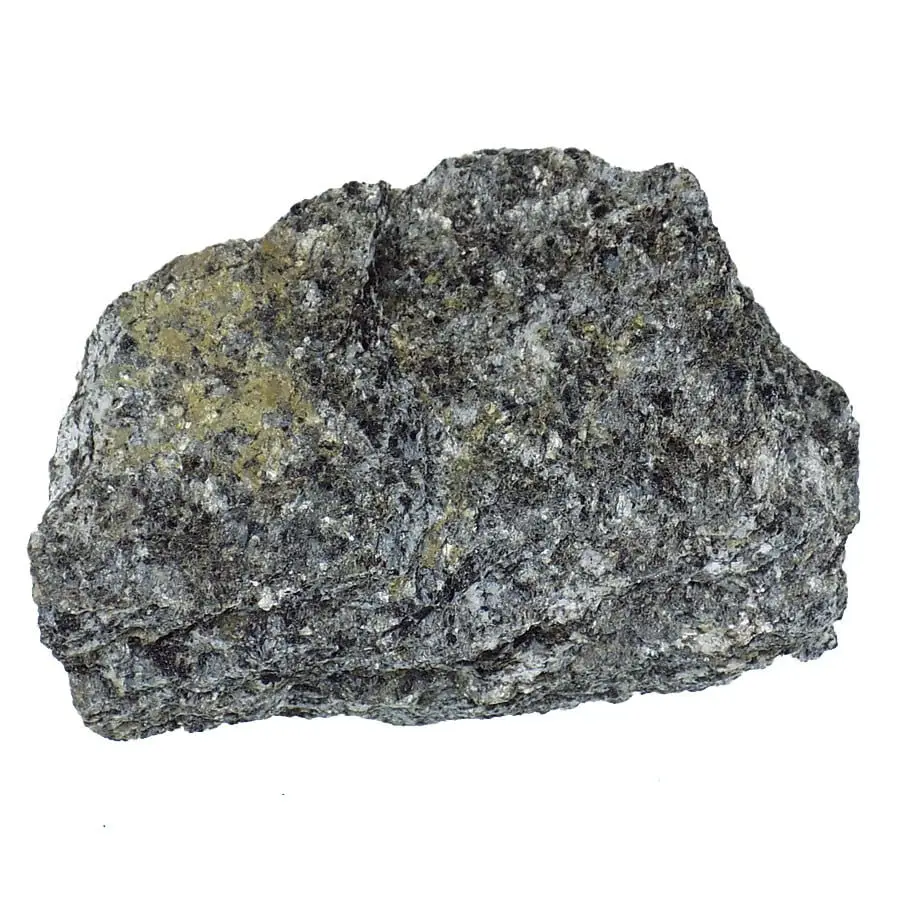
It’s distinct by schistosity texture that is layering in a coarse-grained, crystalline rock due to the parallel arrangement of platy mineral-like micas. Schist is a medium-grade rock produced from the metamorphism of fine sediments.
Slate
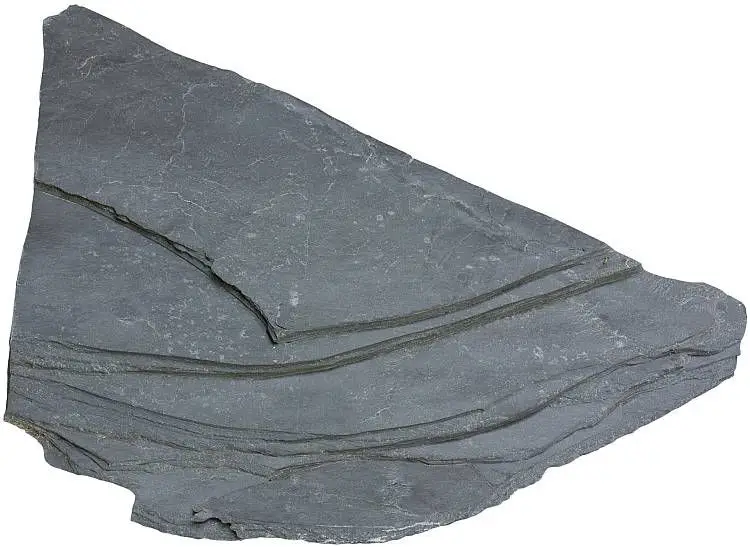
It has a strong and flat cleavage which enables the rock to be easily split into sheets-foliated. The colors could be purple, green, red, black, and grey. It’s a very fine-grained rock mainly origin from mudrock or shale. Slate forms relatively under low-grade metamorphic conditions. The bedding of origin sedimentary rocks is preserved.
Phyllite
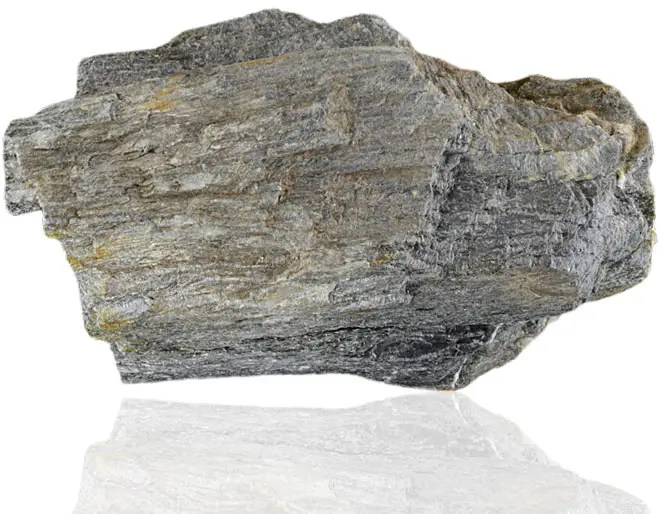
It is fine grain size, dark color metamorphic rock, often grey or dark green. It has strong foliation, which is visible as sheet-like cleavage. Phyllite is higher than slate in metamorphism grade and lower than schist. As the slate, the origin is from shale or mudrock.
Hornfels
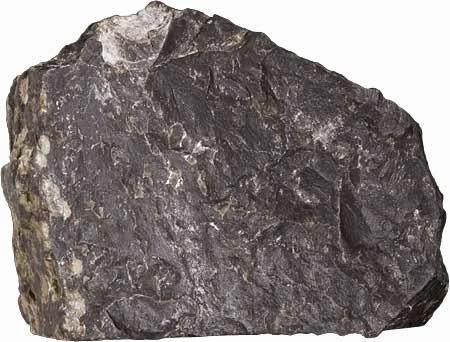
Formed by contact metamorphism with no foliation from mudstone or shale, fine-grained and brittle rock in which crystals display little orientation.
Here is a box of metamorphic rocks specimen from amazon which has 12 samples. Get it now from the below link.
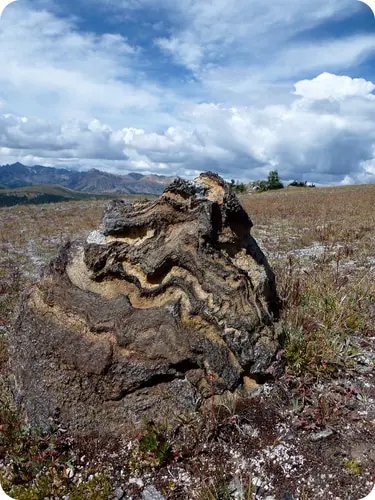
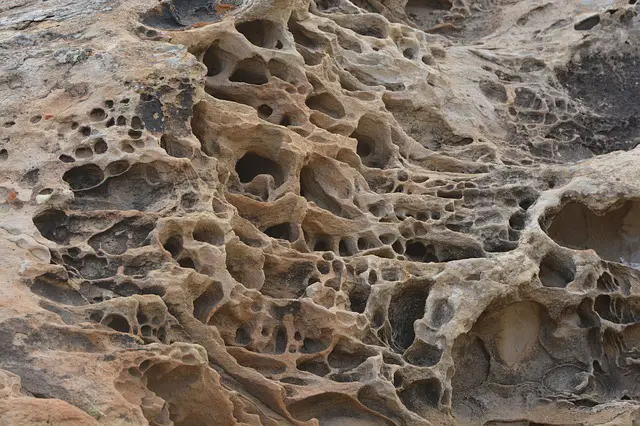

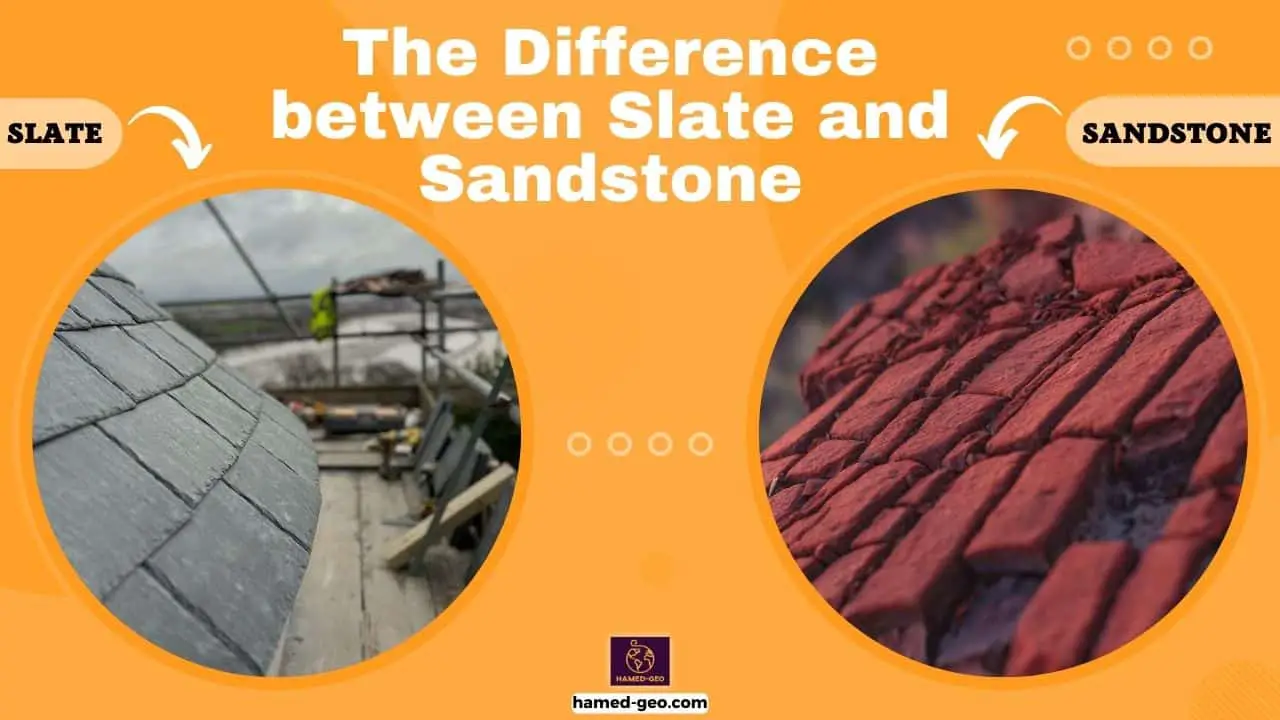
[…] the mantle. Convergent plate boundaries associated with mountain building, crustal deformation, metamorphism, earthquakes, and igneous activity. Thus, they are very complicated geologic […]
[…] is found in igneous and metamorphic rocks like pegmatites, schists, and granites. The finest emerald mined in […]
[…] of fragments derived from preexisting rocks or of materials precipitated from solutions; and (3) metamorphic rocks, which have been derived from either igneous or sedimentary rocks under conditions that caused […]
[…] rocks by burial deep into the Earth’s crust and by heating, they will change to metamorphic rocks. Or the buried sedimentary rocks may be exposed to magma, which then will cool and become an […]
[…] are bedding planes in sedimentary rocks formed by sequential layers of solidified sediments. Also, foliated metamorphic rocks have parallel cleavage planes which allow them to be split readily such as slate and schist. […]
[…] A dark-colored mica that is rich in iron and magnesium. Biotite typically forms in igneous and metamorphic rocks and is more resistant to weathering than […]
[…] olivine, pyroxene, and amphibole. Olivine is a green mineral that is typically found in igneous and metamorphic rocks, while pyroxene and amphibole are dark-colored minerals that are commonly found in igneous […]
[…] Prograde and retrograde metamorphism are two distinct processes that occur within the Earth’s crust, resulting in the transformation of rocks under varying temperature and pressure conditions. While prograde metamorphism refers to the formation of new minerals and textures due to the increasing temperature and pressure, retrograde metamorphism involves the reversion of minerals back to their original state as the temperature and pressure decrease. Understanding the rocks that are predominantly affected by these two processes is crucial in comprehending the complex nature of metamorphic rocks. […]
[…] in the formation of new mineral assemblages and the destruction of original sedimentary features. Metamorphic rocks often exhibit a distinct foliation, which is a parallel alignment of mineral grains. The intensity […]
[…] Analyzing the petrogenesis of different rock types, including igneous, sedimentary, and metamorphic rocks. […]